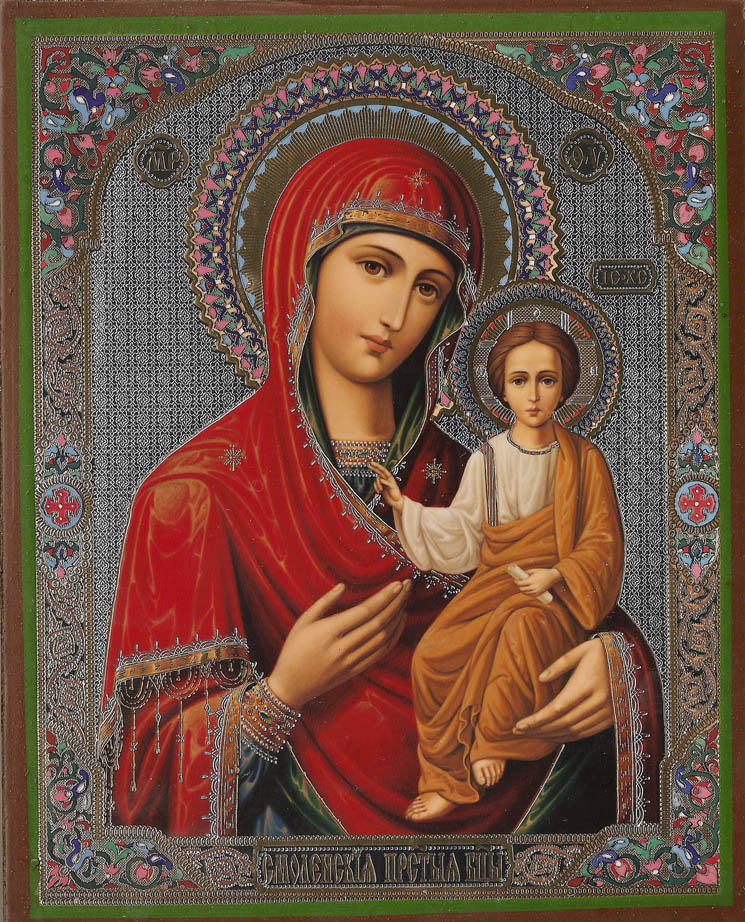Bulgaria was the first Slav country to adopt Christianity in 865. Along with missionaries from Constantinople the Bulgarian rulers of that time welcomed icon-painters, too. Ever since that time the Byzantine icon-painting has been linked with the principles of Byzantine aesthetics, with the general development of the East Orthodox Art and the cultural history of Europe as a whole. The oldest Bulgarian icons were made of ceramics and originated in the 9th century in the monasteries around the first Bulgarian capitals of Pliska and Preslav. The best preserved ceramic icon in Bulgaria is that of St. Theodor Stratilates (9-10 century AD) and it is composed of more than 20 glazed ceramic tiles. The monumental image of the saint who bears the expression of ascetic contemplation is one of the main assets of the icon. During the next centuries the proximity to Byzantium, which was the leading cultural power in Europe, influenced to a certain extent Bulgarian mediaeval painting. Bulgarian icons were usually painted on a flat limetree or cypress covered with a layer of glue and plaster, on top of which there was sometimes a piece of cloth soaked in alabaster. The icon-painters used natural colour powders dissolved in water and egg yolk and then fixed them with a protecting polish containing linseed and tar. Some of the icons were partially covered with a layer of metal items making the image of the saint more conspicuous. During the 12th-14th century the capital Veliko Tarnovo was the second main cultural centre of the icon-painting after Constantinople. Religious art was interpreted in the light of Hesychasm which was the leading elite philosophy at the time. Fine icons from that time have survived, remarkable for their clean-cut, restrained and solemn composition. At the time of Ottoman domination (15th-19th century AD), the icon-painting developed unevenly. The icons became a distinctive national feature, a weapon against the conquerors' attempts to assimilate the population. In its further development icon-painting revealed a growing trend towards becoming a folk art. The lack of the former solemn monumentality was compensated for by additional ornamentation, abundance of plastic decoration and a tendency for a detailed presentation of the plot. The aim was to make this art comprehensible for the ordinary unenlightened viewers. Throughout the 19th century the spirit of the National Revival, the struggle for an Independent Bulgarian Church and for national independence was reflected in icon-painting. National schools of art were established in some prospering Bulgarian towns such as Samokov, Tryavna and Bansko. All of them are known for their individual style and generations of painters. Christ, saints and martyrs were often painted from models. Heroic scenes from Bulgarian history were also introduced in churches. Having passed a long course of development the Bulgarian icon is a valuable contribution to the artistic heritage of humanity and is a means of understanding the spiritual quest and sensitivity of Bulgarian people as a nation throughout its long history.
|


